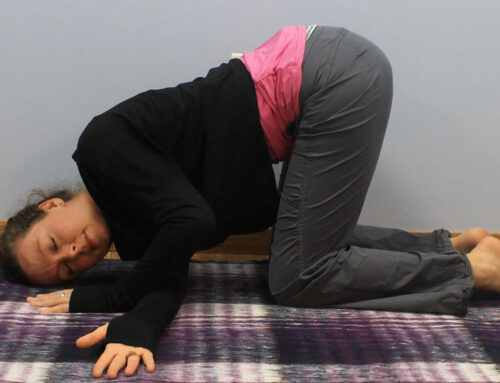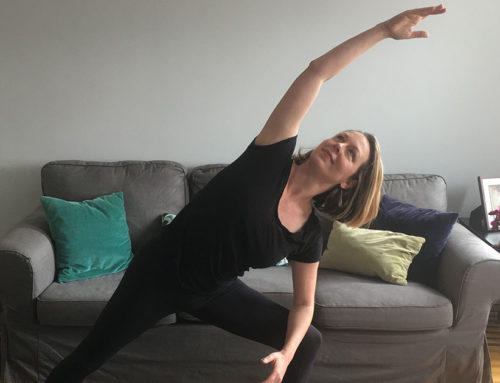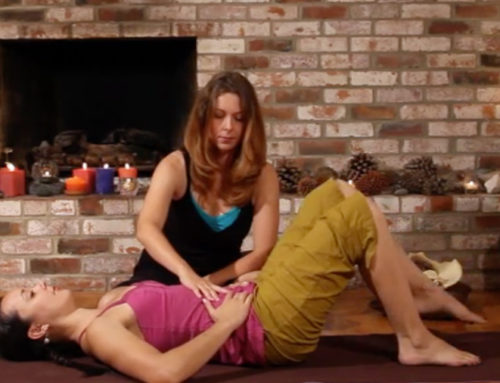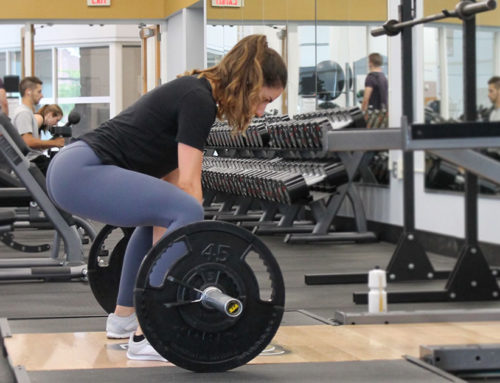In my last blog post, I referenced the new study by Huang et al. showing the benefits of yoga for urinary incontinence. For the next two blog posts I’m going to go into more detail about the aspects of continence and the evidence-based research that supports using yoga as an adjunct treatment modality for stress and urge urinary incontinence.
Sitting posture and the pelvic floor
Sapsford et al. published a paper studying sitting postures and the effect on the pelvic floor. They worked with 17 women, all of whom had undergone vaginal deliveries. Half of the group was experiencing urinary incontinence. The study set out to determine if there was a difference in resting tone of the pelvic floor and abdominals between the asymptomatic (non-leaking) and symptomatic urinary incontinence groups.
The results showed an increase in resting activity of the pelvic floor muscles in the asymptomatic group. This correlated with an increase in lumbar lordosis (curve in the lower back). Why is this relevant? Upright sitting, as opposed to slumping, requires postural control (aka core activation). The pelvic floor muscles are part of the core, along with the transverse abdominals (between the two hip points in the front), multifidi (small muscles between the vertebra), and diaphragm (under the ribs). The authors point out that pelvic floor muscles activity influences bladder inhibition and provides support to the pelvic organs. Over time, adopting the non-slumped posture may protect against pelvic organ prolapse and urinary incontinence.
Pelvic floor, sitting posture, and urinary incontinence
Pelvic floor muscles are less active in the slumped posture. The perfect storm—decrease in lumbar lordosis, decrease in pelvic floor muscles activity, decreased support of the pelvic organs and increased risk for urinary incontinence and pelvic organ prolapse (cystocele, rectocele, etc). The icing on the cake: any muscular, ligament, or other connective tissue damage that may have occurred during pregnancy or delivery.
Bottom line: Your mother was right…again! Sit up straight! For more info on ideal sitting posture check out this video with physical therapist Dawn Cox.
How yoga helps your sitting posture
The beautiful Marianne Williamson practicing excellent seated awareness.
Feel your sitz bones grounded down into the chair. Does one side feel heavier than the other? Practice tracing a small circle clockwise and counterclockwise. Imagine your head is sitting easefully on top of your neck, like a bobble head. Where your head goes your neck follows. Once you get into the forward head position it’s more difficult to not allow your shoulders to slump forward, followed by your back and your pelvis.
Practice seated cat/cow. See if that informs finding your ideal sitting posture. Know that you are not only helping your pelvic floor but also protecting your spine—a two-for-one!
References
Huang, AJ, Chesney MA, Schembri M, Subak LL. “Yoga to Treat Urinary Incontinence in Women: Results of a Pilot Randomized Trial.” Paper 59 at 34th Annual Scientific Meeting of the American Urogynecological Society.
Mahony DT, Laferte RO, Blais DJ. Integral storage and voiding reflexes. Urology 1977;9:95-106.
Sapsford RR, Richardson CA, Maher CF, Hodges PW. Pelvic floor muscle activity in different sitting postures in continent and incontinent women. Arch Phys Med Rehabil 2008;89:1741-7.
Originally published 5/9/14.







[…] Some people might be in the habit of grunting until they are red in the face to pass a bowel movement. This increase in intraabdominal pressure can push down on the pelvic organs. This is something you want to avoid, especially if you already have a pelvic organ prolapse. […]
[…] When we sit, it is quite easy to slump as we focus in on our computer or other forward tasks. This sets us up for back pain, pelvic organ prolapse, and urinary incontinence. […]
[…] feet inform your standing posture, which informs your pelvic floor function. Standing with your rear end tucked under? That puts your gluts to sleep! Strengthening your feet […]
[…] Sometimes we tend to sit in a slouched position back on the tailbone. While there is no “correct” posture we must be aware that if we tend to sit slouched back for the majority of our sitting time we are not doing our pelvic floor and spine any favors. […]
[…] Studies demonstrate a relationship between sitting posture and prolapse. Sitting in a slumped position with our pelvis tucked under decreases the natural curve in our back and weakens the pelvic floor muscles. Prevent or decrease severity of prolapse by optimizing your sitting posture throughout the day. […]
[…] Read more about relationship between sitting posture and urinary incontinence. […]